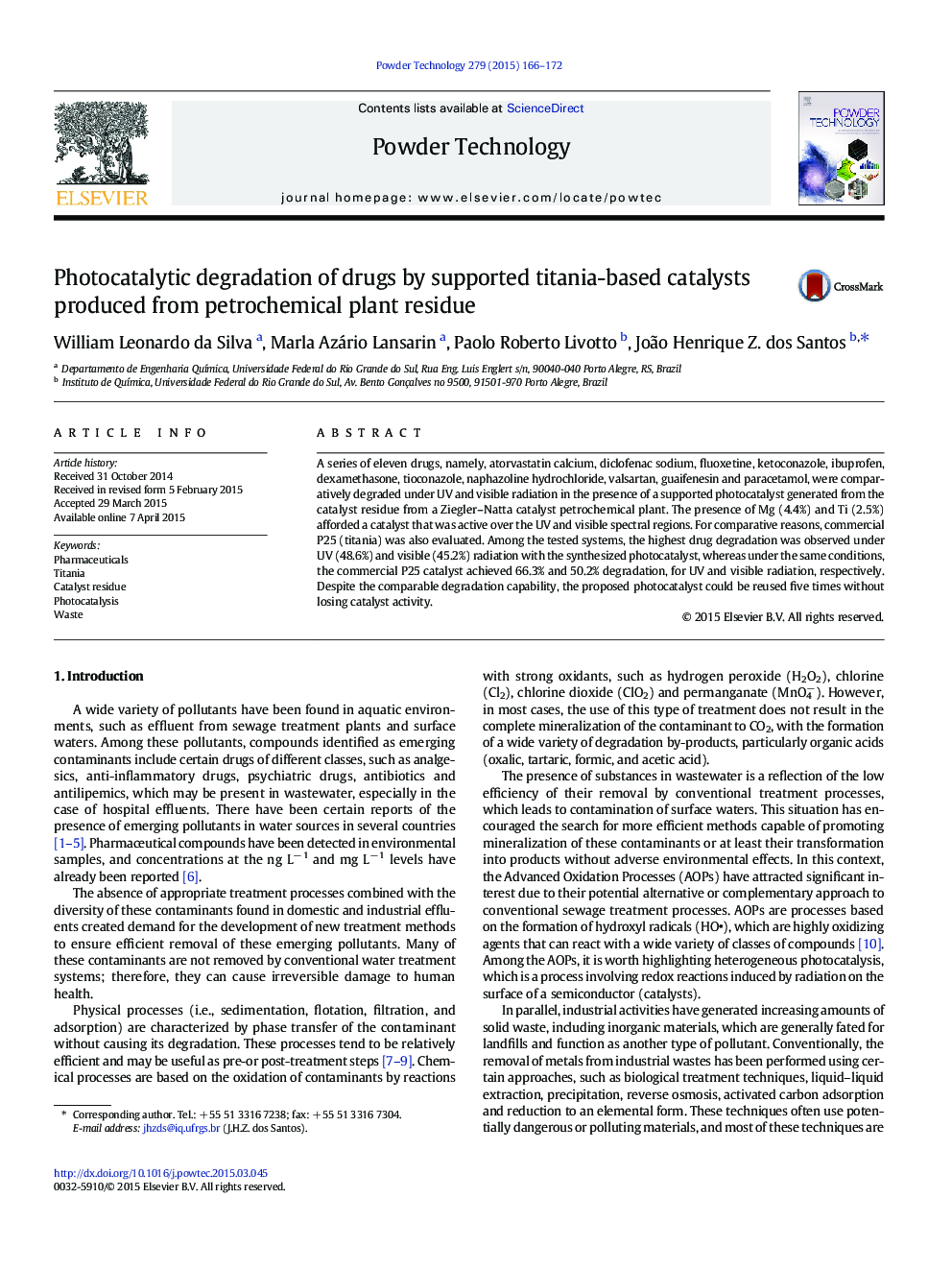| Article ID | Journal | Published Year | Pages | File Type |
|---|---|---|---|---|
| 235571 | Powder Technology | 2015 | 7 Pages |
•Photocatalyst produced from petrochemical residue active for drug degradation•Photocatalytic activity was evaluated by degradation of eleven drugs (UV/vis).•Volume and structure of the drug influence on the easiness to degradation•Catalyst with petrochemical residue showed roughness after five cycles of reusing.
A series of eleven drugs, namely, atorvastatin calcium, diclofenac sodium, fluoxetine, ketoconazole, ibuprofen, dexamethasone, tioconazole, naphazoline hydrochloride, valsartan, guaifenesin and paracetamol, were comparatively degraded under UV and visible radiation in the presence of a supported photocatalyst generated from the catalyst residue from a Ziegler–Natta catalyst petrochemical plant. The presence of Mg (4.4%) and Ti (2.5%) afforded a catalyst that was active over the UV and visible spectral regions. For comparative reasons, commercial P25 (titania) was also evaluated. Among the tested systems, the highest drug degradation was observed under UV (48.6%) and visible (45.2%) radiation with the synthesized photocatalyst, whereas under the same conditions, the commercial P25 catalyst achieved 66.3% and 50.2% degradation, for UV and visible radiation, respectively. Despite the comparable degradation capability, the proposed photocatalyst could be reused five times without losing catalyst activity.
Graphical abstractFigure optionsDownload full-size imageDownload as PowerPoint slide
